A message aims to produce certain effects, but it can collide with local situations, with different psychological dispositions and desires, and produce a boomerang effect, it always closes on the receiver and that is where the battle is decided
The communication battle is not won in the media, it is won at school. This certainty and the fact that we are living in the age of digital socialization of information should raise the question of whether it is not necessary to introduce elements of semiotics and other related elements into our school curricula in a more rigorous way –although it seems that not so much. –, as an appreciation of art, Cuban culture, history of science.
The idea is supported by what communication theorists have been working on for decades. Perhaps the person who has put it best is Umberto Eco, because when referring to the phenomena of mass communication, he warned that, regardless of the communicational hegemony of some power, which is capable of drowning the social space with its messages, «it was observed that what the message intentionally said was not necessarily what the public read. The most obvious examples were that the image of a barnyard full of cows is “read” differently by a European butcher than by an Indian Brahmin, that an advertisement for a Jaguar arouses the desire of a wealthy viewer and provokes frustration in the public. a disinherited In short, a message aims to produce certain effects, but it can collide with local situations,
The message is always closed in the recipient and that is where the battle is decided.
Let us note, to add to Eco’s examples, that for a news item about Ukraine, where the journalist seeks public empathy by asserting that people in Kyiv “are people like you and me. I have seen Dolce & Gabbana bags, Louis Vuitton clothes, that is, people who could be in just as well be in Madrid”, there are two readers, some of whom will accept the idea that the condition of being human is crystallized in the brands that they consume and depending on of where they might belong; and those who, breaking down the unwritten meanings of the message, will reject it for instrumentalizing human beings in terms of their consumption and their xenophobic background, for reducing those who may have the right to walk the streets of Europe to the human condition.
But other closer examples should trigger our alerts. That despite all the communicational hegemony against the blockade that prevails in the country’s media, there is a part of the population – not insignificant and perhaps growing – that reads in it a justification for internal errors, speaks of the danger of not understanding that the message is always closed at the receiver. Whoever takes a tour of the social networks and their bubbles in Cuba will see how this idea of the blockade as a mere smokescreen has an important weight in the opinions that are expressed.
But beyond certain examples, even more serious is the formation of an informed consumer who has not been educated to look outside the immediate information, implicit or explicit in the messages, for the referents that make it possible to decode what is read. Referring even to which he has had access, but is unable to make the necessary connections. Too often I read my students at the University, who have received hundreds of hours of history, Marxism and other Social Sciences classes, who believe that Cuba’s battle against Yankee imperialism and its instrumentalization through the counterrevolutionary sector of exile, it is a problem of “loving each other”, and they ignore the historical, geopolitical and class base of the confrontation.
The issue is that it is not enough to teach, we must ensure that learning not only creates tools for analysis, but also accessible references when needed.
That same lack is what makes the vile argument that seeks to whitewash Batista’s “justice” that murdered one out of every 2.3 Moncada assailants have a receptive ear in a part of the population; who tortured to such a degree, castrating, mutilating and gouging out the eyes of the imprisoned combatants; who persecuted in the streets and murdered young people who had nothing to do with combat action and then, and only then, brought the survivors he could not murder to trial, for heroic acts of decency by people and honorable members of the army.
The argument that seeks to compare, in favor of Batista’s “justice”, with the trials of the vandals for the violent acts of July 11, for which no one has been tortured, nor have there been murders in cells, nor hunts of young people in the streets to be killed; for which less than one out of every 50 participants has been sentenced to prison terms, and only those who were actors in the violence unleashed in the midst of a socio-sanitary emergency that put the country in tremendous tension to preserve human life. Acts of violence where pharmacies, polyclinics and hospitals were robbed where at that very moment people were fighting for life. Acts of violence where calls were made to lynch the police, those who are also children, neighbors and part of the town,
That the enemy (let’s not fool ourselves, it is always the enemy, because we are at war, even if they want to sell us the opposite) has learned to close the message on the receiver, reaching cell phone to cell phone, should help us to propose change, in this matter, whatever has to be changed.
In every lie that manages to prevail, our incapacities are portrayed. In our favor, we have that the truth, the history and the purpose of the future is our main advantage. As much as they try to hide it, the counterrevolution cannot be rigorous, because it needs lies. But we also have schools, public spaces, our media as essential instruments to design the rearguard and the scene of this battle.
And we have the people, always the people, the one that is the protagonist of the deed, and from which its leaders come.

